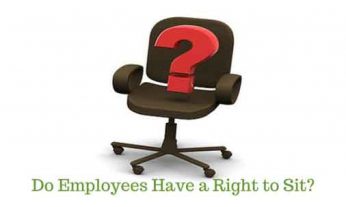 Can Vicarious Liability extend to what your employees do after hours? Employers do not generally concern themselves with what their employees do after they punch out at the end of the day. But a recent $1.5 million jury verdict may cause California employers to pay close attention to what their employees do if they choose to remain on the premises after the ends of their shifts – particularly if they run establishments that serve alcohol.
Can Vicarious Liability extend to what your employees do after hours? Employers do not generally concern themselves with what their employees do after they punch out at the end of the day. But a recent $1.5 million jury verdict may cause California employers to pay close attention to what their employees do if they choose to remain on the premises after the ends of their shifts – particularly if they run establishments that serve alcohol.
The case in question involves an employee of the restaurant chain On the Border. Vincent Quintanilla worked at the On the Border located in Mission Valley, San Diego. On the evening of December 8, 2012, some of his fellow employees held a birthday celebration for him. After he finished his shift, he had drinks with his coworkers at the restaurant for several hours, and then drove away.
Later that night, Quintanilla’s vehicle collided with a skateboarder named Kai-Yen Cheng. Cheng suffered a broken leg, as well as other injuries. After the incident, Quintanilla fled the scene. Authorities later determined that Quintanilla was responsible. He was arrested, and eventually pleaded guilty to felony hit-and-run driving.
Cheng sued On the Border for his injuries, arguing that Quintanilla was acting within the scope of his employment when the accident took place. The attorneys representing On the Border argued that Quintanilla was a customer at the time, and that the restaurant would therefore not be liable for his actions. The jury sided with Cheng, and awarded him $1.5 million.
“Respondeat Superior” and Vicarious Liability in California
The concept of an employer being held responsible for the tortious actions of its employees when they are acting within the scope of their employment is called “respondeat superior.” California’s policy on respondeat superior is laid out in the case of Kephart v. Genuity, in which a family sued an internet services company after a “road rage” incident caused by one of its employees.
The employee forced the Kephart family’s vehicle off the road before heading to an airport for a business trip. Genuity argued that the employee was far removed from his employment at the time of the accident, and so the company should not be held responsible for its employee’s actions. A jury agreed and found that Genuity was not liable.
In upholding the jury’s decision, a California Superior Court ruled that employers may be considered vicariously liable for the tortious actions of their employees, if the actions result or arise from pursuing their employers’ interests. The Court also states that the relevant issue was whether the employee was acting within the course and scope of his employment. (The opinion holds that the jury was reasonable in determining that the employee’s misconduct did not occur within the course and scope of his employment with Genuity.)
In the case involving On the Border, the plaintiff’s attorneys argued that Quintanilla became intoxicated in the course and scope of his employment because his employer regularly allowed its employees to consume alcohol on its premises and received a monetary benefit for doing so. If the case is not overturned on appeal, it could have serious consequences for California businesses. [Read more…]


